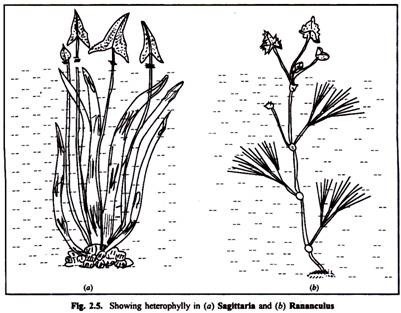ADVERTISEMENTS:
The floral diagram is always drawn circular in outline. The different floral whorls are represented in concentric circles, the sepals on the outermost circle, then the petals, the stamens and carpels towards the inner side (Fig. 11.2 & 11.3).
The first step to draw a floral diagram is to examine mature floral buds which are due to open shortly but have not yet opened.
Pluck the floral bud from the mother axis only after you have noted down the anterior and posterior sides. Floral parts are drawn in a floral diagram as they would be seen in their transverse sections below the mother axis.
Make the floral diagram in the following sequential stages:
1. A very small circle is drawn above the floral diagram. This circle represents the mother axis. In actinomorphic flowers, the mother axis circle may be denoted as but in zygomorphic flowers it is drawn as. If the flowers are terminal, the mother axis is not drawn.
2. In bracteate flowers, a section of bract is drawn below the floral diagram. In flowers without any bract, such a section is not drawn.
ADVERTISEMENTS:
3. In bracteolate flowers, bracteoles are drawn in section on the left and right sides of the diagram.
4. Note the number of sepals, their arrangement in relation to the mother axis and their aestivation. Draw transverse sections of sepals between the mother axis and the bract, keeping all these points in view. In case of odd number of sepals, the odd sepal would be drawn either posterior or anterior to the flower, i.e., opposite the mother axis or opposite the bract, respectively.
5. The same procedure is repeated for petals as for sepals. However petals should be drawn alternate with the sepals.
6. If the flower is zygomorphic, petals are drawn of unequal sizes. Same may be the case with the sepals also in zygomorphic flowers.
7. If any sepal or petal is spurred, it is shown by drawing a loop at the back of that particular part in the floral diagram.
8. If parts of sepals or of petals are fused, draw lines to connect their edges together in the floral diagram.
9. In the epipetalous condition (i.e. when stamens are joined with petals), link the stamens and petals with small radial lines.
10. In case of bilabiate calyx or corolla, the two lips are joined by bulging lines.
11. Count the number of stamens, the number of whorls in which they are arranged, their cohesion and agnation to other floral parts, their position in relation to petals, their introse or extrose position, and draw them inside the petals in the floral diagram. Stamens are represented through transverse sections of the anthers. In the obdiplostemonous condition, the stamens of the outer whorl are drawn opposite to the petals. Introse stamens face towards the centre whereas the extrose towards the petals. Staminodes are represented either by an asterisk (*) or by a cross (x).
ADVERTISEMENTS:
12. The gynoecium is represented by a transverse section of the ovary. Also draw the number of locules and the number of ovules in each loculus in the ovary. Type of placentation is also drawn.


